Winner Medals
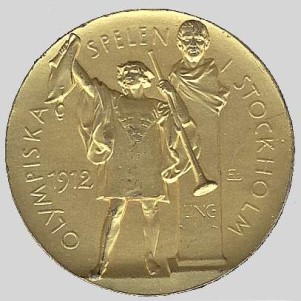
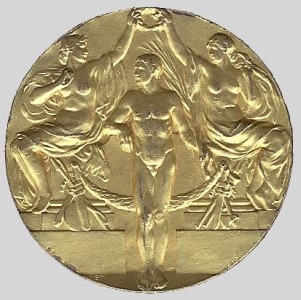
Images copyright © by Ulf Ström, Stockholm, Sweden
| 1st Place: | Gold Medal | Material: | Gold |
|---|---|---|---|
| Weight | 24 gr | ||
| 1st Place Teams: | Gold Medal | Material: | Gilt Silver |
| Weight | 18 gr | ||
| 2nd Place: | Silver Medal | Material: | Silver |
| Weight | 16 gr | ||
| 3rd Place: | Bronze Medal | Material: | Bronze |
| Weight | 19 gr | ||
| Diameter: | 33 mm | Design by: | Erik Lindberg / Bertram Mackennal |
| Mint: | CC Sporrong | ||
| Thickness: | 2,5 mm | Ribbon: | None |
| Obverse: | Two female figures crowning a young victor in the Olympic Games with a laurel wreath; | ||
| Reverse: | The figure of a herald, proclaiming the Olympic Games and standing close to a bust of Ling, the founder of the Swedish system of gymnastics. | ||
| Numbers of Medals: | Gold: 90 Gild Silver: 200 Silver: 285 Bronze: 270 | ||
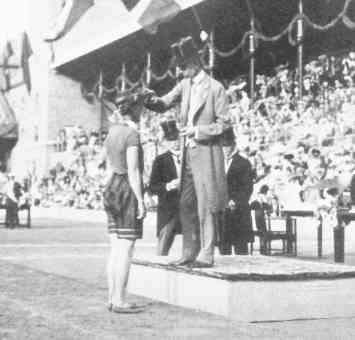 H.M. the King, crowing the winner of the marathon race 1912
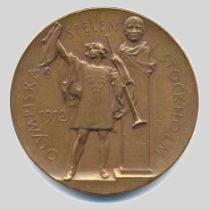
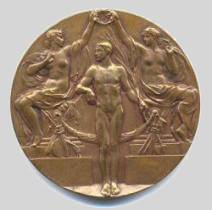
(Source document: Official Report 1912, page 160) |
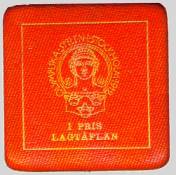 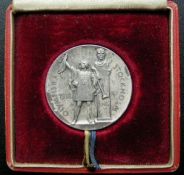 red or green respectively.
In track and field, the winner receibed a gold medal, the socond a silver an the third a bronze medal. In the team events, the first place carried with it a diploma and each member of the team got a vermeil medal. Those in the second- and third-placed teams had silver and bronze medals respectively. There were always exceptions: in the equestrian
events a medal went to each member of the firtst team; the same applied
in the doubles teams. The helmsman and his second, winners in the 12 metre
yachting class, each received a gold medal. (Source document: Olympic Review, 1972) |